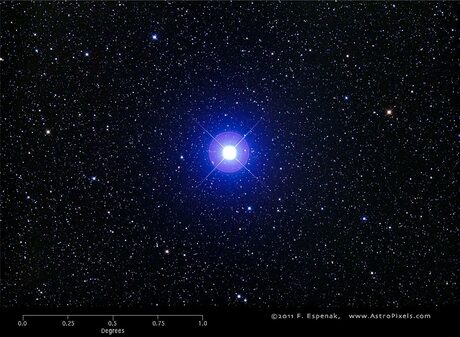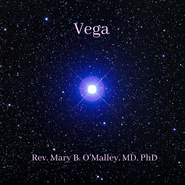Vega
by Rev. Mary B. O'Malley, MD, PhD ©2012
|
Photo by Fred Espenak, used with permission
|
About the star:
Vega, also designated Alpha Lyrae (α Lyrae), is the brightest star in the constellation of Lyra, the second brightest star in the Northern Hemisphere after Arcturus. Is is one of our closest stars, at only 25 light years from the Sun. Each night the position of the stars appear to change as the Earth rotates. However, when a star is located along the Earth's axis of rotation, it will remain in the same position and thus be called a 'pole' star. The direction of the Earth's rotation gradually changes over time in a process known as the precession of the equinoxes. A complete precession cycle requires 25.770 years during which time the pole of the Earth's rotation follows a cirular path across the celestial sphere. At present, the pole star is Polaris. Vega was the northern pole star around 12,000 BC and will be so again in the year 13,727. Vega is the brightest of the successive northern pole stars. Source: https://en.wikipedia.org/wiki/Vega |
All audio recordings are copyrighted intellectual property. They are for your personal listening use only.

